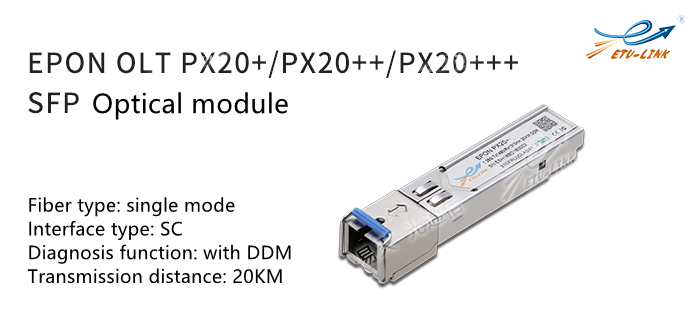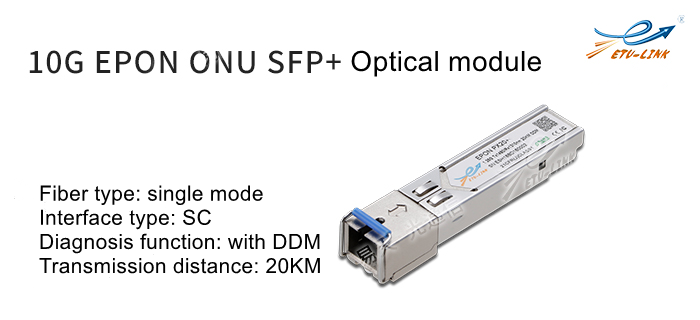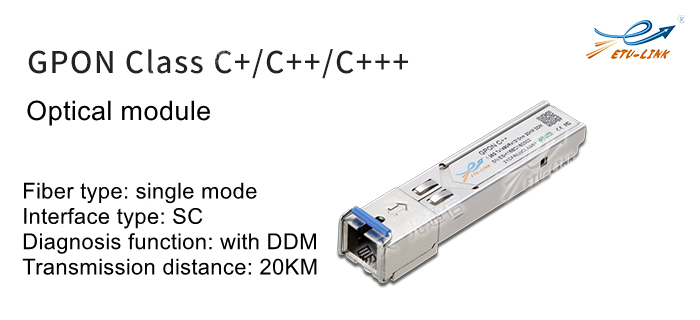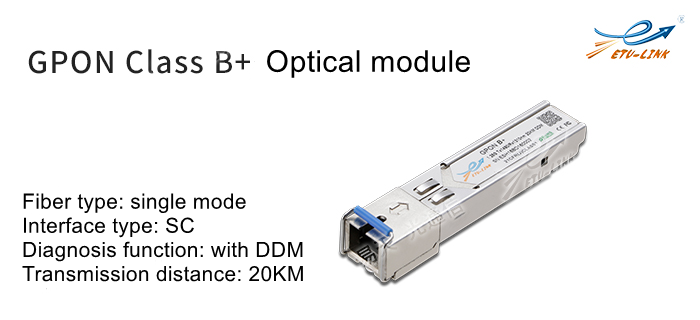
Introduction and application of EPON and GPON optical module
Speaking of PON optical modules, let's first understand what PON is. Generally speaking, PON refers to a passive optical fiber network, which is an important way for broadband access network services to be carried.
PON technology originated in 1995. Later, according to the difference between the data link layer and the physical layer, PON technology was gradually subdivided into APON, EPON, and GPON. Among them, APON technology has been eliminated by the market due to its high cost and low bandwidth.
Next, ETU-LINK will give you a detailed introduction to the two optical modules, EPON and GPON.
EPON
EPON, a PON technology based on Ethernet, adopts point-to-multipoint structure, passive optical fiber transmission, and provides multiple services on Ethernet. EPON technology is standardized by the IEEE802.3 EFM working group. In this standard, Ethernet and PON technology are combined, PON technology is used in the physical layer, and Ethernet protocol is used in the data link layer, so that the PON topology is used to realize Ethernet access.
The advantages of EPON technology are low cost, high bandwidth, strong scalability, compatibility with existing Ethernet, and convenient management.
The common EPON optical modules currently on the market are:
1. EPON OLT PX20+/PX20++/PX20+++ optical module, suitable for optical network unit and optical line terminal, and its transmission distance is 20KM, single-mode, SC interface, support DDM.

2. 10G EPON ONU SFP+ optical module, suitable for optical network unit and optical line terminal. The transmission distance is 20KM, single mode, SC interface, and DDM support.

10G EPON can be divided into two categories according to the rate: asymmetric mode and symmetric mode. The downlink rate of the asymmetric mode is 10Gbit/s, the uplink rate is 1Gbit/s, and the uplink and downlink rates of the symmetric mode are both 10Gbit/s.
With the development and popularization of high-traffic and high-bandwidth services such as 4K video and virtual reality, the large-scale use of 10G EPON has become a general trend.
GPON
GPON was first proposed by the FSAN organization in September 2002. On this basis, ITU-T completed the formulation of ITU-T G.984.1 and G.984.2 in March 2003, and completed the standardization of G.984.3 in February and June 2004, thus finally forming the family of standards of GPON.
GPON technology is the latest generation of broadband passive optical integrated access standard based on the ITU-TG.984.x standard. It has many advantages such as high bandwidth, high efficiency, large coverage, and rich user interfaces. Additionally, it is regarded by most operators as an ideal technology to realize broadband and comprehensive transformation of access network services.
At present, the common GPON optical modules on the market are:
1. GPON OLT CLASS C+/C++/C+++ optical module, suitable for optical line terminal. Its transmission distance is 20KM, rate is 2.5G/1.25G, single mode, SC interface, support DDM.

2. GPON OLT CLASS B+ optical module, suitable for optical line terminal, its transmission distance is 20KM, rate is 2.5G/1.25G, single mode, SC interface, support DDM.

The EPON and GPON optical modules mentioned above can be provided by ETU-LINK. The optical modules produced are compatible with equipment of various brands such as Huawei, ZTE, and Fiberhome, and have stable working performance. Thanks for your support!
Categories
New Blog
Tags
© Copyright: 2025 ETU-Link Technology CO ., LTD All Rights Reserved.

IPv6 network supported
Friendly Links:
易天官网